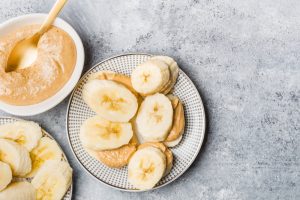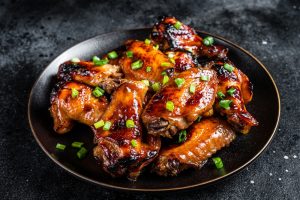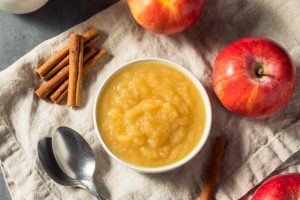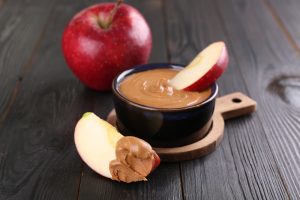Traditional banana pudding isn't healthy for weight loss—a single cup packs around 304 calories and 37 grams of sugar while leaving you hungry soon after.
That said, modified versions using ingredients like Greek yogurt, skim milk, and sugar substitutes can fit into your weight loss plan when you control portions carefully.
Keep reading to understand exactly why traditional banana pudding sabotages your progress, how to make smarter versions that won't derail your goals, and when (if ever) you should allow yourself this indulgence.
The Nutritional Reality of Traditional Banana Pudding
A standard cup of traditional banana pudding contains approximately 304 calories.
That might not sound devastating until you realize that a half-cup serving—which looks disappointingly small in a dessert bowl—still delivers between 150 and 300 calories depending on how rich the recipe is.
Restaurant portions push this even further, ranging anywhere from 240 to 460 calories per serving.
The sugar situation gets worse when you look closer.
That same cup holds roughly 37 grams of sugar, which exceeds the daily recommended limit for added sugars that many health organizations suggest.
When you're trying to lose weight, this amount of sugar in one sitting creates problems beyond just the calories themselves.
Here's what you're actually getting in each cup:
- 53 grams of carbohydrates (mostly from sugar and refined ingredients)
- 4.9 grams of protein (barely enough to matter)
- 8 grams of fat, including saturated fat
- 1-2 grams of fiber (practically negligible)
For context, your body needs 25 to 35 grams of fiber daily for healthy digestion and satiety.
Banana pudding gives you maybe 5% of that requirement while consuming nearly a fifth of your daily calories if you're eating around 1,500 calories for weight loss.
The macronutrient breakdown reveals the core issue: you're getting mostly carbs and sugar with almost no protein or fiber to keep you satisfied.
Protein and fiber are the two nutrients that actually help you feel full and stay full.
Without them, those 304 calories disappear quickly, leaving your stomach empty and your appetite unsatisfied within an hour or two.
Restaurant and store-bought versions tend to be even more calorie-dense than homemade recipes.
Commercial preparations often use heavy cream, full-fat milk, extra sugar for shelf stability, and generous amounts of vanilla wafers to create that signature texture.
Homemade versions give you more control, but traditional recipes still follow the same problematic formula: high sugar, high fat, minimal protein, and very little fiber.
What this means practically: if you're aiming for a 500-calorie deficit to lose about a pound per week, one cup of banana pudding consumes more than half that deficit.
You'd need to eat significantly less at other meals or exercise substantially more just to compensate for a single dessert serving.
Why Banana Pudding Works Against Weight Loss Goals
Banana pudding packs a lot of calories into a very small space, which researchers call “calorie density.” This matters because your stomach registers volume and stretch, not calories.
Foods with low water content and high fat or sugar content—exactly what banana pudding contains—let you consume massive amounts of energy before your body signals that you're full.
Research consistently shows that calorie-dense foods make it nearly impossible to feel satisfied before you've eaten too much.
The dessert fails at the three factors that actually make you feel full:
Protein: With only about 5 grams per cup, banana pudding provides nowhere near the 20-30 grams you'd need to trigger genuine satiety.
Fiber: The measly 1-2 grams don't come close to creating that “full” sensation, especially when you consider that a single meal should ideally contain 8-10 grams.
Water content: Unlike whole fruits that contain substantial water, banana pudding is dense and concentrated, offering little volume relative to its calorie load.
This combination means you can eat several hundred calories and still feel hungry 30 minutes later.
Your stomach simply doesn't register the energy you've consumed because there wasn't enough physical bulk to stretch it.
The blood sugar situation makes everything worse.
When you eat banana pudding, the high sugar and refined carbohydrate content floods your bloodstream with glucose quickly.
Your pancreas responds with a surge of insulin to manage this spike.
Within an hour or two, your blood sugar crashes below where it started, triggering intense hunger and cravings.
You end up wanting more food—often more sweets—even though you just consumed hundreds of calories.
Portion control becomes a serious challenge with this dessert.
Standard servings measure 1-2 cups, but restaurants regularly serve much larger portions.
The real problem isn't just what the menu says—it's what researchers call the “portion size effect.”
Studies confirm that people eat more when presented with larger portions regardless of how hungry they actually are.
Banana pudding's creamy, sweet palatability makes it incredibly easy to exceed your intended serving size.
You don't notice you've eaten too much until the bowl is empty.
All these factors combine into what you might call a perfect storm.
The high sugar and fat create intense palatability that overrides your natural stopping cues.
The lack of protein and fiber means there's nothing to slow digestion or create lasting fullness.
The calorie density lets you consume significant energy without feeling physically satisfied.
The blood sugar crash triggers more cravings.
And the portion size effect encourages you to eat more than you planned.
Each ingredient amplifies the problems created by the others.
The cream or whole milk adds fat and calories without satiety.
The sugar delivers quick energy that disappears fast.
The vanilla wafers contribute refined carbs with zero nutritional benefit. Even the bananas, which do offer some fiber and nutrients, can't compensate for everything working against you in the recipe.
When you're trying to create a calorie deficit for weight loss, banana pudding attacks your efforts from multiple angles simultaneously.
It's not just one problem you can work around—it's a combination of issues that make this particular dessert especially challenging to fit into a weight loss plan.
Modified Banana Pudding Recipes That Support Weight Loss
Swapping whole milk or cream for skim milk immediately saves you approximately 139 calories per serving.
That single change cuts nearly half the calories from a traditional recipe without dramatically altering the texture.
If you want an even lighter option, unsweetened almond milk reduces calories further while maintaining the creamy base you need for pudding consistency.
Greek yogurt transforms banana pudding from a protein desert into something that actually supports your weight loss goals.
A Greek yogurt-based version can deliver up to 29 grams of protein per serving—six times more than the traditional recipe.
This protein content changes the entire satiety equation. Instead of feeling hungry an hour later, you'll stay satisfied for several hours.
The tangy flavor of Greek yogurt also pairs naturally with banana sweetness, reducing your need for added sugar.
Cottage cheese offers another high-protein approach with impressive results.
A cottage cheese pudding typically contains around 102-130 calories per serving while providing 29 grams of protein.
You blend the cottage cheese until smooth, eliminating the curds and creating a surprisingly creamy texture.
The calorie-to-protein ratio here beats almost every other dessert option available.
Calorie comparison across versions:
- Traditional recipe: 187-304 calories with minimal protein
- Modified with skim milk and sugar-free mix: 48 calories per serving
- Greek yogurt version: Similar calories to traditional but 29g protein
- Cottage cheese version: 102-130 calories with 29g protein
Sugar-free pudding mixes eliminate a major source of empty calories without requiring you to become a sweetener chemist.
These mixes use artificial sweeteners that don't spike blood sugar, helping you avoid the crash-and-crave cycle.
If you prefer natural options, you can rely more heavily on the bananas themselves for sweetness or use coconut sugar in smaller amounts.
Ripe bananas contain enough natural sugar to satisfy sweet cravings when you're not competing with refined sugar for your taste buds' attention.
The bananas themselves actually bring legitimate benefits to the recipe.
They're rich in potassium, which supports fluid balance and muscle function—both important when you're losing weight and potentially exercising more.
The dietary fiber in bananas promotes satiety better than refined ingredients.
Bananas also provide complex carbohydrates that offer sustained energy rather than the quick spike-and-crash from added sugars.
When bananas become the primary sweet element rather than just an accent to sugar and cream, you're working with fruit's natural advantages.
Vanilla wafers present an easy target for calorie reduction.
Each wafer adds roughly 18-20 calories, and traditional recipes might include a dozen or more per serving.
You have several options here: skip them entirely and let the pudding stand alone, use just a few crushed wafers on top for texture contrast instead of layering them throughout, or substitute with a small amount of low-sugar granola for crunch.
Many people find that once they've upgraded the pudding base with Greek yogurt or cottage cheese, they don't miss the wafers at all.
The most dramatic transformation comes from combining multiple modifications.
Start with a base of blended cottage cheese or Greek yogurt, sweeten it with mashed ripe bananas and a touch of sugar-free pudding mix for that classic vanilla flavor, skip the wafers or use minimal amounts, and you've created something that barely resembles the original in terms of nutrition.
You're looking at potentially 200+ fewer calories per serving with dramatically better macros.
These modified versions don't taste identical to traditional banana pudding—they can't, given the ingredient changes.
What they do offer is a way to satisfy similar cravings without derailing your calorie deficit.
The increased protein keeps you full longer, the reduced sugar prevents energy crashes, and the lower calorie density means you can eat a reasonable portion without guilt.
How to Include Banana Pudding Without Derailing Your Progress
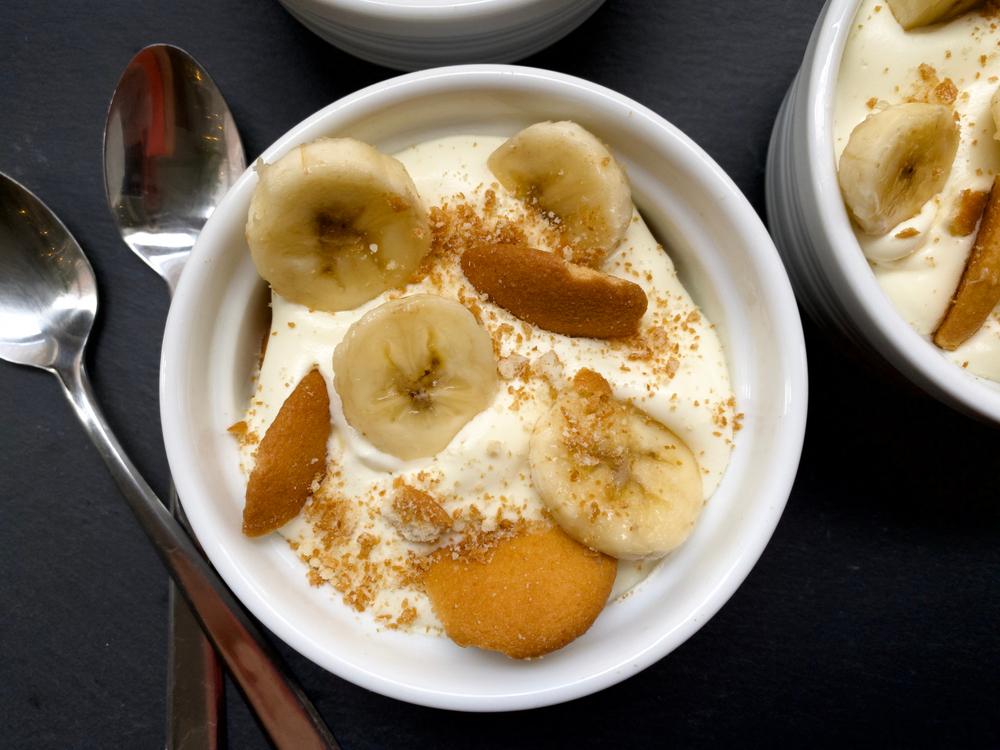
A realistic portion size for banana pudding during weight loss is half a cup maximum.
Not a generous half cup rounded at the top—a measured half cup using an actual measuring cup.
This portion contains roughly 150-175 calories in a traditional recipe, or as little as 50-65 calories if you've made a modified version.
Anything larger starts consuming too much of your daily calorie budget for the satiety you're getting in return.
Measuring matters more than you think.
Eyeballing portions consistently leads people to underestimate serving sizes, sometimes by 50% or more.
Measure your portion with a measuring cup, transfer it to your dessert bowl, and put the rest away immediately.
This single step eliminates the most common mistake people make with calorie-dense desserts.
Frequency determines whether banana pudding becomes a problem or stays manageable.
Reserve it as an occasional treat—once weekly at most, ideally less often.
Daily consumption, even of modified versions with controlled portions, makes it too easy to exceed your calorie targets over time.
The dessert simply doesn't provide enough nutritional value to justify frequent inclusion when you're trying to lose weight.
Strategic timing can improve how banana pudding affects your progress:
Eating it after a protein-rich meal helps tremendously.
When you've already consumed 30-40 grams of protein from chicken, fish, or lean beef, adding a small dessert doesn't trigger the same hunger response it would on an empty stomach.
The protein slows digestion of the pudding's sugar, blunting the blood sugar spike and extending your feeling of fullness.
Some research suggests eating dessert at breakfast might actually help with long-term adherence to weight loss plans.
The logic is that satisfying sweet cravings early prevents you from feeling deprived and potentially binging later.
If you're going to include banana pudding, having it after a high-protein breakfast could be your best timing option.
Never eat banana pudding as a standalone snack.
Without other foods to slow digestion and provide satiety, you're setting yourself up for a blood sugar crash and subsequent cravings within an hour.
Pre-portioning versus eating from containers isn't just a helpful suggestion—it's the difference between success and failure with calorie-dense foods.
When you eat directly from a large container, you disconnect from how much you're actually consuming.
Your brain focuses on the eating experience, not the quantity.
Multiple studies confirm that people eat significantly more when served from large containers compared to pre-portioned servings, regardless of hunger levels.
Here's what pre-portioning looks like in practice: make your banana pudding, immediately divide it into individual half-cup portions using small containers, and store them in the refrigerator.
When you want dessert, you take one container and eat only that amount. The physical act of opening a second container creates a decision point that helps you stop.
Balancing banana pudding within your daily calorie budget requires intentional planning.
If you know you're having banana pudding that evening, you need to reduce calories elsewhere in your day.
This doesn't mean skipping meals—that leads to excessive hunger and overeating.
Instead, make small adjustments across multiple meals.
Choose grilled chicken instead of a fattier cut of meat at lunch.
Skip the oil in your salad dressing and use vinegar instead. Have one less snack.
These small reductions across the day create room for dessert without exceeding your target.
Track your total daily calorie intake when including treats like banana pudding.
You can't manage what you don't measure.
Many people think they're eating in a deficit when they're actually at maintenance or surplus because they're not accounting for extras like desserts accurately.
Visual tricks help create psychological satisfaction even with smaller portions.
Use small dessert dishes rather than regular bowls—a half cup looks more substantial in a small dish than in a large bowl.
Your brain receives visual cues about portion size, and a full small bowl feels more satisfying than a partially filled large bowl, even when the quantity is identical.
Eat slowly and mindfully when you're having banana pudding.
Put your spoon down between bites. Notice the texture and flavor.
This isn't just mindfulness advice—it's practical strategy.
Your brain needs roughly 20 minutes to register fullness signals from your stomach.
Eating slowly gives those signals time to reach your consciousness before you've finished and are tempted to get more.
If you find yourself consistently wanting larger portions or having banana pudding more frequently than planned, that's valuable information.
It means either your overall diet isn't satisfying enough, you're restricting too severely in other areas, or this particular food triggers overeating patterns for you.
In that last case, you might need to eliminate it entirely rather than trying to moderate it.
Better Dessert Options When Weight Loss Is Your Priority
A weight-loss-friendly dessert needs three characteristics: lower calorie density, higher satiety value, and nutrients that actually benefit your body.
Banana pudding fails on all three counts, but several alternatives succeed where it falls short.
Frozen banana “nice cream” gives you the creamy sweetness you're craving with dramatically different nutrition.
You blend frozen bananas until they reach soft-serve consistency—nothing else required, though you can add cocoa powder or vanilla extract.
A cup contains roughly 200 calories compared to banana pudding's 304, but more importantly, you're getting whole fruit with intact fiber.
The fiber slows digestion and keeps you satisfied longer. The volume is substantial, so your stomach registers fullness.
And you're eating real food with vitamins and minerals rather than processed ingredients.
Greek yogurt with fresh fruit creates similar satisfaction with even better macros.
A cup of plain Greek yogurt topped with berries delivers around 150-180 calories, 15-20 grams of protein, and enough volume to feel like a real dessert.
The protein content alone makes this superior to banana pudding—you'll stay full for hours rather than hungry within 90 minutes.
The natural sweetness from fruit satisfies cravings without triggering the blood sugar rollercoaster that refined sugar creates.
Chia seed pudding offers surprising satiety for minimal calories.
Mix chia seeds with almond milk and let them sit overnight to form a pudding-like texture.
A serving contains roughly 150-180 calories and provides substantial fiber—around 10 grams compared to banana pudding's 1-2 grams.
That fiber expands in your stomach and slows digestion considerably.
You can add vanilla extract and top with fresh fruit to enhance the flavor without adding significant calories.
Calorie and satiety comparison:
- Traditional banana pudding: 304 calories, 5g protein, 1-2g fiber, low satiety
- Frozen banana nice cream: 200 calories, 2.4g protein, 6g fiber, moderate satiety
- Greek yogurt with berries: 150-180 calories, 15-20g protein, 4-6g fiber, high satiety
- Chia pudding with almond milk: 150-180 calories, 5-6g protein, 10g fiber, high satiety
The satiety-to-calorie ratio tells you how full you'll feel relative to the energy you've consumed.
Greek yogurt with fruit wins this comparison decisively—you're getting similar or fewer calories than banana pudding but dramatically more fullness from the protein and fiber.
Chia pudding comes in second with its exceptional fiber content.
Even frozen banana nice cream, which doesn't have much protein, provides better satiety than banana pudding because you're eating whole fruit with natural fiber instead of processed ingredients.
Other options work well depending on your preferences.
Fresh watermelon or other fruit sorbets give you sweet satisfaction with high water content and minimal calories—often under 100 calories per serving.
Dark chocolate in small portions (70% cacao or higher) satisfies chocolate cravings with antioxidants and healthy fats that promote satiety, though you need discipline to stick with a small piece.
Protein-rich frozen yogurt bark combines Greek yogurt with fruit, frozen into sheets you can break into pieces—offering similar benefits to the yogurt-and-fruit option with a more interesting texture.
Baked fruit with cinnamon caramelizes natural sugars without adding refined sugar, creating dessert-like sweetness from actual fruit.
What makes these alternatives “weight-loss-friendly” comes down to specific characteristics you can evaluate in any dessert.
High protein content keeps you full and preserves muscle mass during weight loss.
Substantial fiber slows digestion and promotes lasting satiety.
High water content adds volume without calories, helping your stomach feel physically full.
Whole food ingredients provide nutrients your body can use rather than empty calories from sugar and refined carbs.
Lower calorie density means you can eat a satisfying portion without exceeding your calorie budget.
Banana pudding fails most of these criteria.
The alternatives succeed specifically because they flip the equation—giving you more satiety for fewer calories, which is exactly what weight loss requires.
When you're eating in a calorie deficit, every food choice matters.
Spending 300 calories on something that leaves you hungry in an hour makes the rest of your day harder.
Spending 180 calories on something that keeps you satisfied for three hours makes everything easier.
The psychological component matters too.
These alternatives don't feel like deprivation because they satisfy similar cravings—cold and creamy from nice cream or yogurt, sweet from fruit, rich from dark chocolate.
You're not eating carrot sticks and pretending they're dessert.
You're eating actual desserts that happen to work with your goals instead of against them.
If you're serious about weight loss, shifting your default desserts from options like banana pudding to these alternatives changes your daily calorie equation significantly.
Making this swap three times per week saves you roughly 300-400 calories per week—enough to accelerate your progress noticeably over months without feeling like you're sacrificing anything important.
Conclusion
Traditional banana pudding isn't compatible with weight loss—it delivers too many calories with too little satiety, making it nearly impossible to stay in a calorie deficit without feeling hungry.
Modified versions using Greek yogurt or cottage cheese can work occasionally if you control portions strictly and accept them as rare treats rather than regular desserts.
Your best move is choosing alternatives like frozen banana nice cream or Greek yogurt with fruit that satisfy similar cravings while actually supporting your weight loss goals instead of fighting against them.

